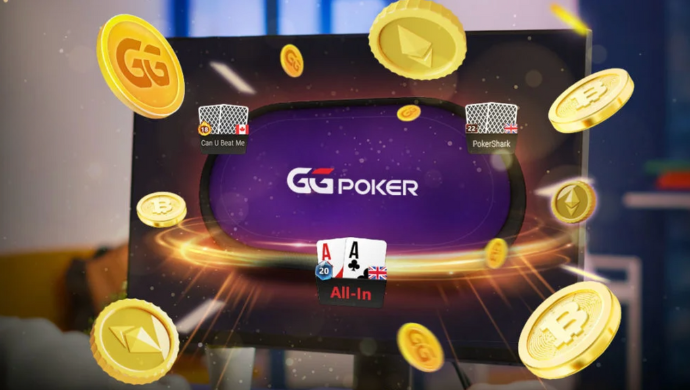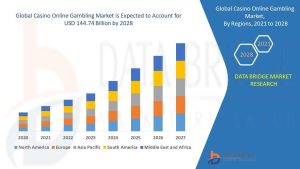
When I pick an online poker room, I’m not chasing hype—I’m chasing a process that turns repeatable edges into long-term results. That means three things: (1) an event ecosystem deep enough to match my schedule and bankroll, (2) tools that actually improve decisions at the table, and (3) security and responsible-play rails sturdy enough to support months of disciplined volume. Judged by those standards, I concentrate my play on GGPoker. Below is my first-person, no-fluff playbook for why I choose GGPoker平台, how I set it up in minutes, which features matter most, how different player types can progress, and how I manage bankroll and variance so “edge” becomes “income.”
1) Why I Choose GGPoker平台
Event depth that fits real life. GGPoker’s calendar spans micros to high stakes, plus frequent satellites. Practically, that means I can ladder into bigger events at lower cost and keep training tied to clear targets instead of random firing.
Global liquidity, less waiting. Coverage across time zones keeps tables running when I’m actually free—weeknights, weekend mornings, whenever. Fewer queues, more hands, faster learning.
Native tools that move the needle. Smart HUD, built-in hand notes, and smooth desktop/mobile parity make it easy to execute theory under time pressure. I want fewer clicks between “idea” and “action.”
Security and discipline by default. Account protections, privacy controls, and responsible-gaming tools help me stay consistent. If the rails are strong, I can focus on playing well, not firefighting.
2) Three Steps to Download and First-Time Setup
Step 1: Choose your device. Desktop is my main engine for multi-tabling and longer grinds; mobile fills short windows so my volume doesn’t collapse when life gets busy. I use both to keep rhythm steady throughout the year.
Step 2: Lock down the account. Right after signup I set a strong password, enable two-factor authentication, turn on device-login alerts, and bind trusted devices. This is non-negotiable: only with security maxed out do training and investment make sense.
Step 3: Standardize the client. On first launch I unify four-color decks, table theme, hotkeys, auto buy-in/top-up rules, and timebank. Then I warm up in micro cash or micro MTTs to re-sync mechanics and settlement flow before moving up.
3) Flagship Features: The Two Wheels—Efficiency and Edge
Rush & Cash (fast-fold) — my efficiency engine. It cuts dead time and boosts hands per hour. More reps, more common textures, more positional practice—in less time. My review quality improves because the sample grows fast.
Smart HUD — my data mirror. A clear, native panel of opponent tendencies by position and pot type helps me set default lines (opens, c-bets, delayed c-bets, check-raises) and stick to them under pressure. It also makes multi-tabling less brittle.
All-In Insurance — my variance buffer. It doesn’t change long-run EV, but it smooths the bankroll when a favored all-in gets rivered. For structured schedules, that steadiness reduces tilt and protects volume.
Notes & replays — my memory prosthetic. I tag recurring spots (pair boards, monotone flops, BTN vs BB SRP, etc.) and maintain bite-size “solutions.” When a pattern repeats in game, the line is ready.
4) On-Ramps That Actually Scale (Pick Your Path)
New to online poker. Start with Rush & Cash to manufacture hand volume—500–800 hands/day builds “spot recognition” quickly. Two habits matter most: clean folds in low-equity spots, and steady value extraction when ahead. Layer in Smart HUD to learn basic profiles (passive vs aggressive; tight vs wide).
Developing regular. Run cash + micro MTTs in parallel. In cash, drill post-flop structures: which boards to range-bet, when to delay, where to insert check-raises, and how to pair sizings with range strength. In MTTs, emphasize stack-depth plans across blind levels and core ICM scenarios. Each week, curate “teaching hands” (missed turn raises, thin value sizing, over-bluffs on paired turns), and convert them into reusable cards.
MTT-focused grinder. Build mini-cycles of Main + Side + Satellites. Sides maintain touch; satellites buy cheaper shots; mains test your ceiling. Two weeks pre-series, run rehearsals for ICM and short-handed final-table play (4-handed/3-handed/HU). Post-session, always review one big win pot, one big loss, and one “uncertain” hand—this mix reduces outcome bias.
Busy schedule, limited time. Weekdays: Rush & Cash and short cash blocks to protect mechanics. Weekends: focus MTT energy on sides and selective mains. The goal is steady volume without wrecking the rest of your life.
5) Bankroll & Risk: Turning Edge Into Income
Partitions with cushions. For cash, I keep 50–100 minimum buy-ins; for tournaments, 100–200 buy-ins as baseline. These adapt to risk tolerance and goals—the purpose is to survive variance long enough for edge to express.
Limits are part of the plan. Deposit/loss/time limits and self-exclusion are not punishments; they’re rails that keep tilt, fatigue, and revenge sessions from erasing a week of good work. I schedule limits on the same calendar as practice and events.
All-In Insurance, used intentionally. It smooths short-run swings; if that helps you maintain volume and discipline, your realized results usually improve even though EV is unchanged.
Nightly review loop. Before logging off, I spend ~15 minutes on 3–5 key pots. I label root causes (range miss, sizing miss, read miss, emotional bleed) and update defaults if a pattern repeats. Improvement becomes visible, measurable, and reusable.
6) Site Execution: Helping “GGPoker” Get Found and Convert
Theme map that mirrors player growth. I organize content under GGPoker平台 into five hubs: Starter → Intermediate → Tournaments → Tools → Risk Management. It matches how real players learn and signals relevance clearly.
Internal links that carry intent. I use a consistent anchor—GGPoker—to connect downloads, tutorials, features, and event hubs. Users get where they want faster; search engines see a coherent topical cluster.
Modular feature cards. I break out Rush & Cash, Smart HUD, All-In Insurance, and festival hubs into skimmable blocks. That raises dwell time and second clicks without bloating the page.
Structured data & cadence. I add Article/FAQ/HowTo schema, title around “GGPoker” and description around “GGPoker平台,” “download,” “events,” “tools,” and “responsible play.” Publishing rhythm: two strategy/guide posts per week, one review, one schedule alert. That fuels a content → crawl → conversion flywheel.
FAQ
1) Should a beginner start with fast-fold or regular cash?
If you want fast exposure to common spots and sample size, begin with fast-fold (Rush & Cash). Then move some volume into standard cash to refine post-flop routes and bet-size pairings. The combo speeds learning and stabilizes execution.
2) How much does a native HUD really help?
A lot—because it shortens the path from observation to action. Even a 2–3% lift in marginal spots compounds across thousands of decisions. For me, Smart HUD has been the most quietly valuable upgrade for real-world winrate.
3) Does All-In Insurance reduce long-term profit?
It doesn’t change theoretical EV; it alters volatility. If smoother curves help you keep volume, review, and discipline intact, realized results often improve despite neutral EV on the insured all-ins.
4) Cheapest way to prep for big series or WSOP-style events?
Grind satellites for entries; use side events with similar structures to rehearse blind transitions and stack-depth lines. Keep an updated checklist for ICM and short-handed final tables. Post-session, always review at least three hands.
5) Where can I find downloads and a step-by-step setup?
Head to GGPoker for the installer, feature guides, and region-specific notes so your configuration and security are correct from day one.
Final Word
Long-term winners aren’t defined by one flashy bluff; they’re defined by a repeatable loop: default strategy → opponent-based adjustments → review-driven updates. With the event depth, global traffic, native tools, and built-in risk controls of GGPoker平台, I can convert studied theory into realized EV—and then convert that EV into steady income. If you want a measured, sustainable path upward, start at GGPoker, lock down your setup, and follow the plans in this guide. Make every session serve a long-term goal—volume, review, refinement, repeat.

